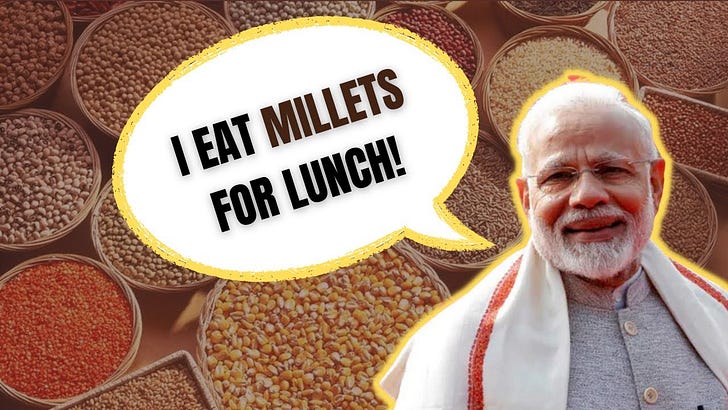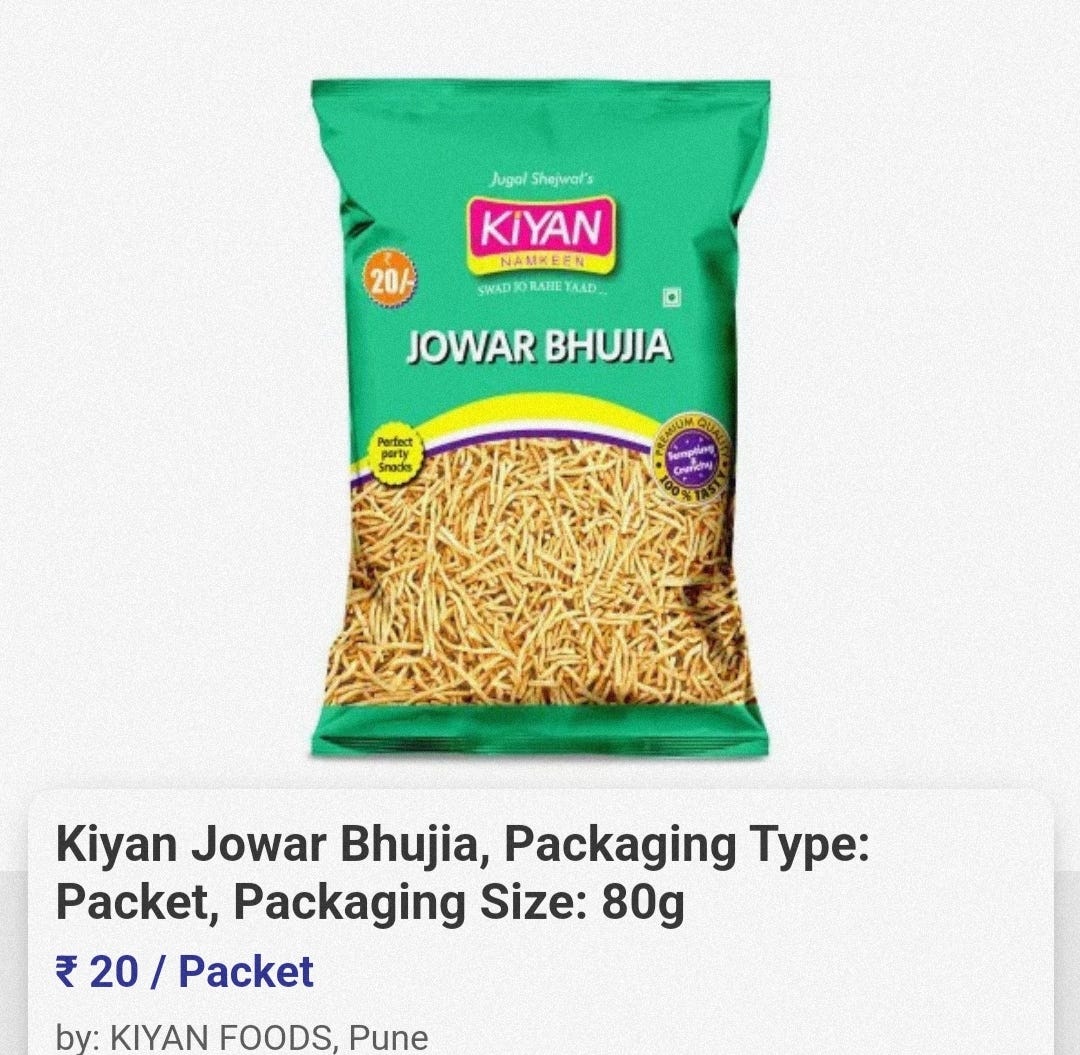🌾 The Millet Magic: How Millets Can Raise Farmers’ Incomes, Exports and Lower Disease
India is betting big on a magic crop family: millets. These magic grains can help us save billions and earn billions. ReadOn!
From conglomerates like ITC and Britannia to startups like Wholsum Foods and Soulfull, brands have their eyes on one crop: millets.
This new obsession has been sparked since the UN declared 2023 as the "International Year of Millets." Why?
Simple, millets have superpowers. They can:
Provide Food Security
Double Farmers' Income
Reduce Malnutrition and Diseases like Diabetes
Boost Exports
So, today we will look at:
How Can Millets Solve These Problems?
Why Have We Ignored Them for So Long?
Challenges that Lie Ahead for Millets
Let's begin…
🥙 Millets: The Food of Our Ancestors
10,000 years ago, the staple food of our ancestors was not wheat or rice.
They grew millets (crops like jowar, bajra, ragi, foxtale, koda) because they were better than wheat and rice.
They still are. How?
Reason 1: Millets are the Bear Grylls of the food world. They can survive harsh conditions like hot and dry weather.
Rice needs around 120-140cm of rain or 5,000 litres of water per kg.
Millets only need 20 cm of rain or 250-300 litres of water per kg!
The whole world is going to get hotter and drier because of climate change. Focusing on millets will ensure that we still have food when the world is burning up.
Reason 2: Millets can increase our exports.
India is the 2nd largest producer of millets. If we increase production, we could export more of these grains when the demand spikes (thanks, climate change).
Reason 3: Unlike wheat and rice (and most other crops), millets don't need fertilisers and pesticides.
This reduces farmers' costs. Plus, the growing adoption of millets will help increase their income.
Reason 4: Millets are super-packed with nutrients like iron, copper and magnesium.
This is a boon for India, which is one of the most micro-nutrient deficient countries in the world. Malnutrition cost us Rs. 60 million per day from 2006-2018!
Some studies state that white rice and flour can increase chances of diabetes, obesity and heart diseases.
Millets, on the other hand, have a low-glycemic content (it doesn't spike your blood sugar content). So, they could help us avoid these diseases and lose the title of the "diabetes capital of the world!".
Woah, sounds like the solution to India’s many problems. Why did we reduce millet production then?
💔 Why We Called It Quits With Millets
A major flaw with millets: low yields.
Millets have a yield of 1,111 kgs per hectare.
Meanwhile, rice has a yield of 2,600 kgs per hectare and wheat has a yield of 3,500 kgs per hectare.
This is why India began focusing on the cultivation of wheat and rice in the 1960s.
This focus was termed “The Green Revolution’, and it completely sidelined millets:
Land under millet production fell from 37 million hectares to 14 million hectares.
Millets’ contribution to cultivated grains fell from 40% to 20%.
Per capita consumption fell from 33 kgs/year to 4 kgs/year.
The Green Revolution had some hidden consequences too:
Increased costs for farmers (fertilisers and pesticides)
Degradation of soil due to the usage of pesticides and fertilisers
Increased health problems
Now, no more.
PM Modi is heavily promoting millets, not just to India but to the world.
But patching up this age-old relationship is not going to be easy.
There are two things we need to take care of:
Demand Generation
Low Yields
Let’s see how…
👨🌾 Taking Care of Demand
Millet consumption is still super low in India.
We're too obsessed with our roti and rice.
We need to pump up demand to incentivise farmers to produce millets.
India's new-found obsession with health is helping us achieve this.
Brands are introducing more millet snacks now:
But relying on only food and snack trends won't work.
So, the government is trying to boost demand by:
Adding millets in midday meals
Providing millets in food programs for the needy
Organising millet fairs
Providing support to farmers to grow millets
Increasing the MSP (minimum support price) for millet crops
Supporting startups that create millet-based products and recipes
And the government (both state and central) haven't stopped here. They're going the influencer marketing way to promote millets by calling celebrities and nutritionists to endorse these grains!
But a bigger problem lies ahead: low yields.
🌱 Tackling Low Yields
Looks like we're back to square one, back to the 1960s, with the same problem ahead of us.
However, now we have something that we didn't have back then: more knowledge and more tech.
We have the power to research and develop higher yielding varieties of millets.
With temperatures and draughts increasing every year, more and more farmers may see crop failures.
This means low incomes for them and food shortages for us.
So, let's hope we can create higher yielding millet varieties soon.
Till then, we can contribute towards demand. Consume more millets, so our farmers are incentivised to grow them.
Let's do our bit for the country and the environment.
What else do you think we can do to achieve this goal?
Let us know if you found this informative. You can reply to this email with your responses or ping us directly on WhatsApp!



